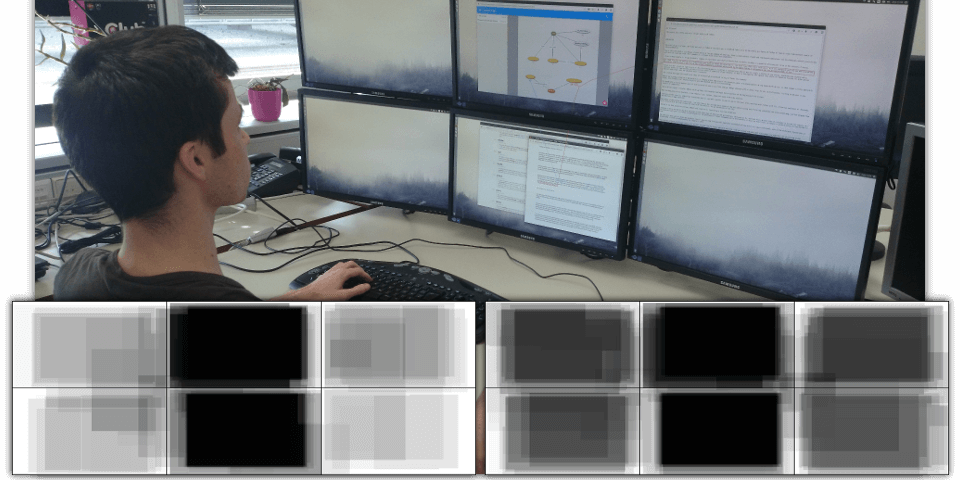
Abstract
We explore how the availability of a sensemaking tool influences users' knowledge externalization strategies. On a large display, users were asked to solve an intelligence analysis task with or without a bidirectionally linked concept-graph (BLC) to organize insights into concepts (nodes) and relations (edges). In BLC, both nodes and edges maintain 'deep links' to the exact source phrases and sections in associated documents. In our control condition, we were able to reproduce previously described spatial organization behaviors using document windows on the large display. When using BLC, however, we found that analysts apply spatial organization to BLC nodes instead, use significantly less display space and have significantly fewer open windows.
Citation
Thomas Geymayer,
Manuela Waldner,
Alexander Lex,
Dieter Schmalstieg
How Sensemaking Tools Influence Display Space Usage
EuroVis Workshop on Visual Analytics (EuroVA), doi:10.2312/eurova.20171112, 2017.
BibTeX
@inproceedings{2017_eurova_display-space,
title = {How Sensemaking Tools Influence Display Space Usage},
author = {Thomas Geymayer and Manuela Waldner and Alexander Lex and Dieter Schmalstieg},
booktitle = {EuroVis Workshop on Visual Analytics (EuroVA)},
doi = {10.2312/eurova.20171112},
publisher = {The Eurographics Association},
year = {2017}
}
Acknowledgements
We thank Marc Streit and Markus Steinberger for helpful discussions. This work was supported in part by the Austrian Science Fund (FWF T 752-N30), and the US National Institutes of Health (U01 CA198935).